Last Thursday, Google finished rolling out the September 2023 helpful content update after a 14-day rollout. The update took 14 days to roll out, starting on September 14, 2023, and ending on September 28, 2022. It has been a few days since the rollout was completed, and we wanted to dig in a bit on the impact felt by this latest Google algorithm update.
The previous two helpful content updates felt somewhat underwhelming for Google Search update standards, but this one did not. To be frank, it was a weird update in that many of the Google tracking tools showed that volatility has calmed significantly during this update, all while the SEO community was heated in documenting ranking changes for themselves, clients or other sites during this update.
It is my opinion that this update was felt more within the SEO industry niche, maybe sites designed to rank well in search engines, more so than typical sites that take into account more than just search engines. This is not to say, I repeat, not to say, that there was not collateral damage, and good, helpful sites, did see a drop in traffic related to the helpful content update. But based on what I track, it does seem this update did have more of an impact on SEOs than the average website owner.
Data providers on the September 2023 helpful content update
Let me start off by saying again that many of the data providers didn’t pick up as much volatility with this update as typical Google algorithm updates. So we were not able to get as much detailed data from as many data providers as we normally get.
Remember, when looking at some of these daily charts, that the update started on September 14th and ended up September 28th.
Semrush. The Semrush sensor quickly began to show less volatility as the update kicked into gear. You can see it cooling as the days went on:
Mordy Oberstein from the Semrush team told us, “It was noticeably more impactful than the last helpful content update back in December 2022 but with less movement than the recent Core Update.” That is for sure true, because the previous helpful content updates felt pretty tame. Here is a chart showing the impact of the September helpful content update on the December helpful content update by niche:
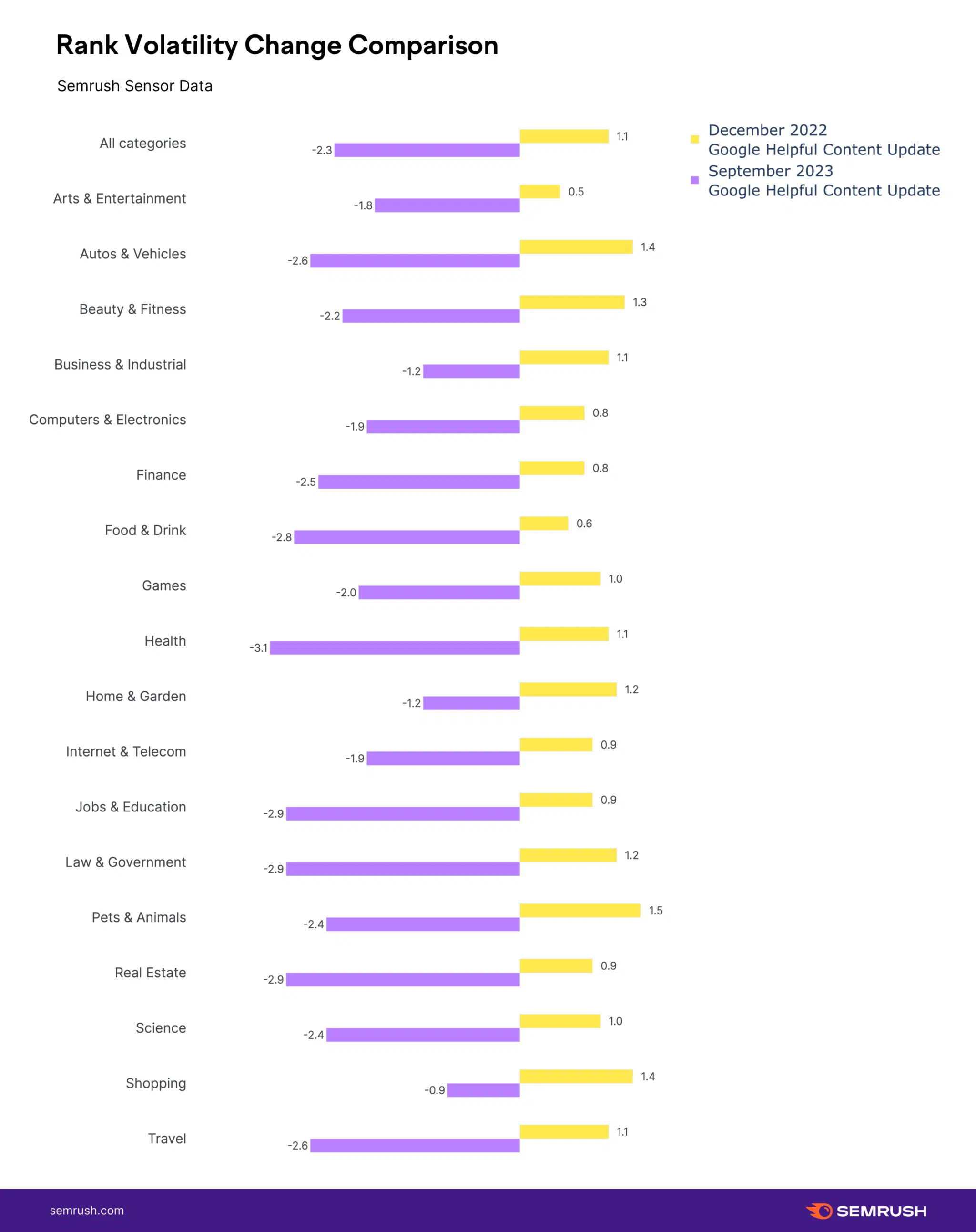
This next chart shows the peaks of volatility by category during the last helpful content update, with the shopping category seeing the most change:
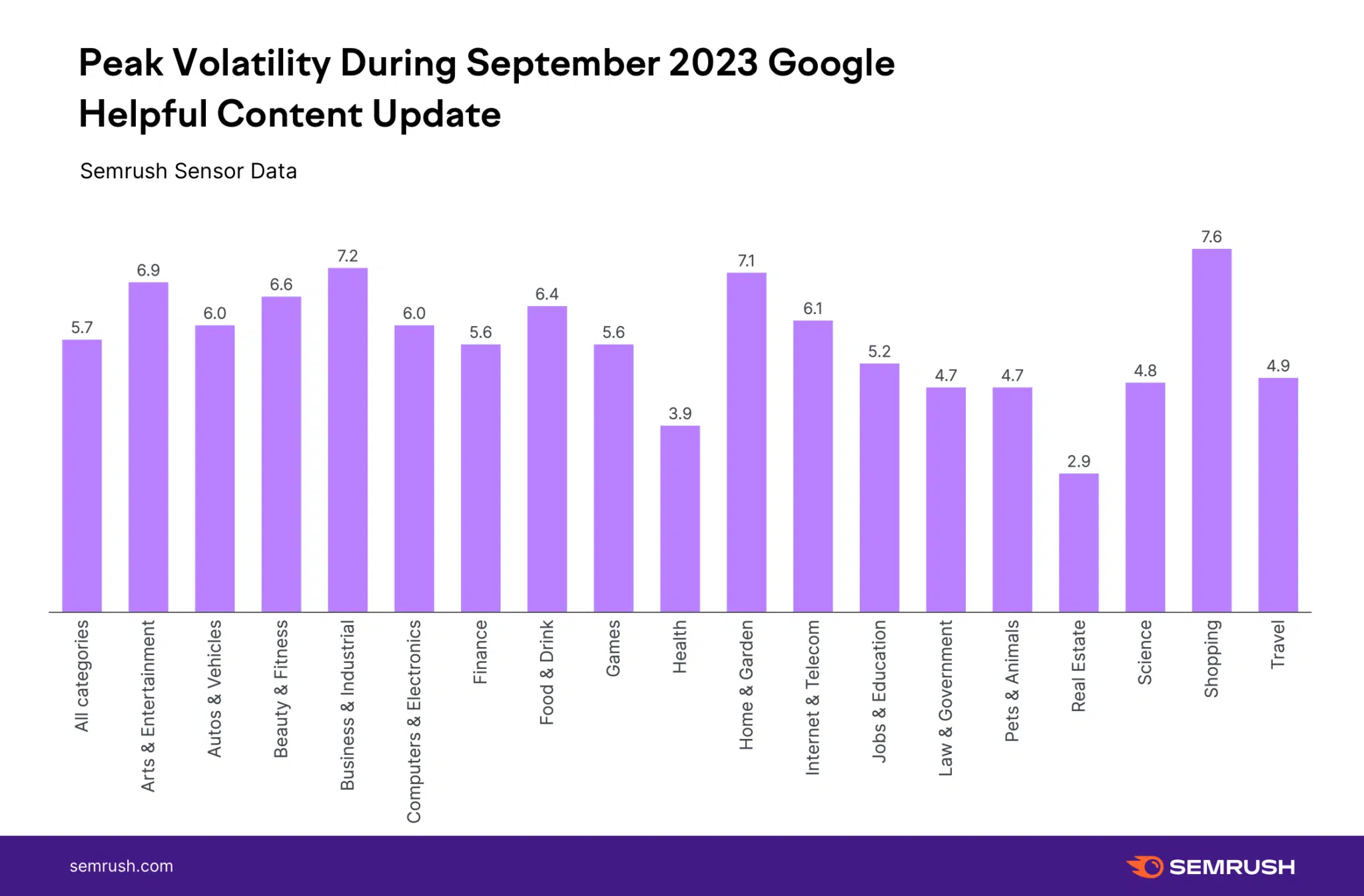
“In comparing peak volatility to the recent Core Update the numbers for the HCU are far less severe. The overall average didn’t hit a peak of 6 on the Semrush Sensor scale and only 3 verticals saw peak volatility above 7,” Mordy Oberstein told us.
seoClarity. The seoClarity team sent me the top winners and losers by niche/industry from this helpful content update. Mark Traphagen from seoClarity also shared a volatility chart:

Here are the winner and loser charts from seoClarity:
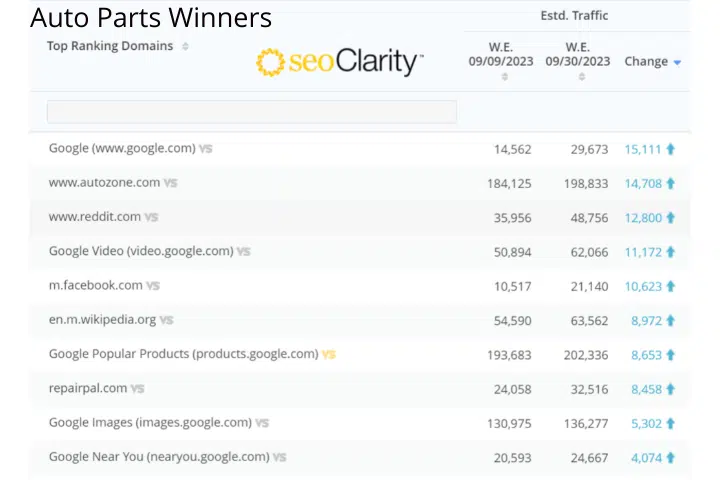



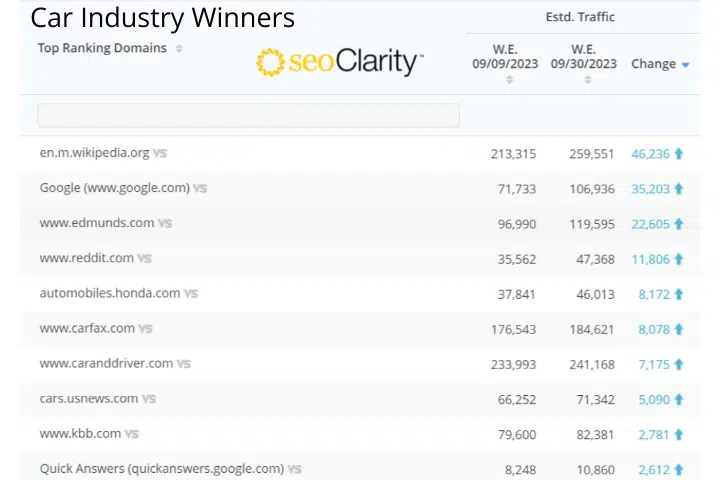

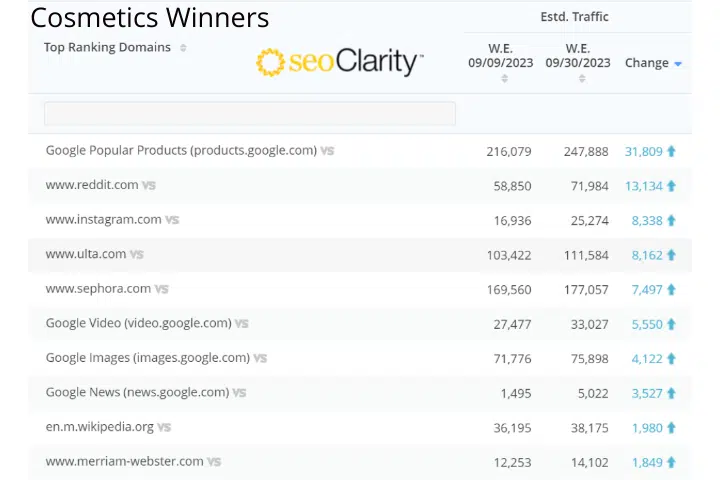
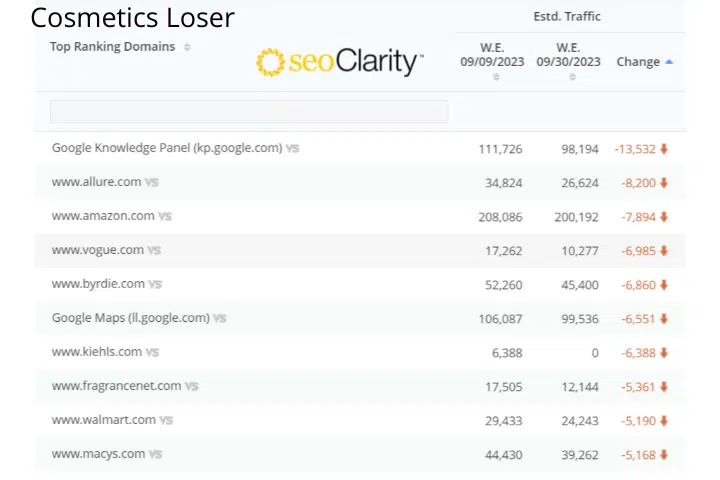




Apparel winners:
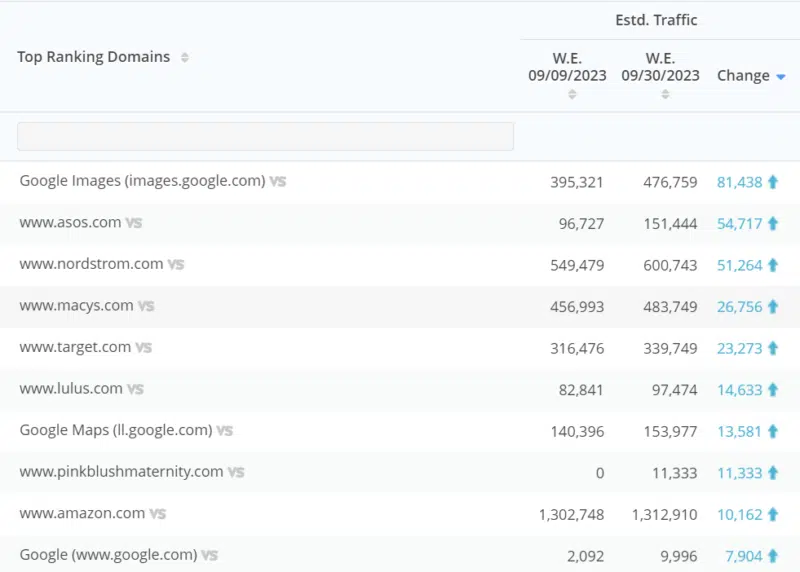
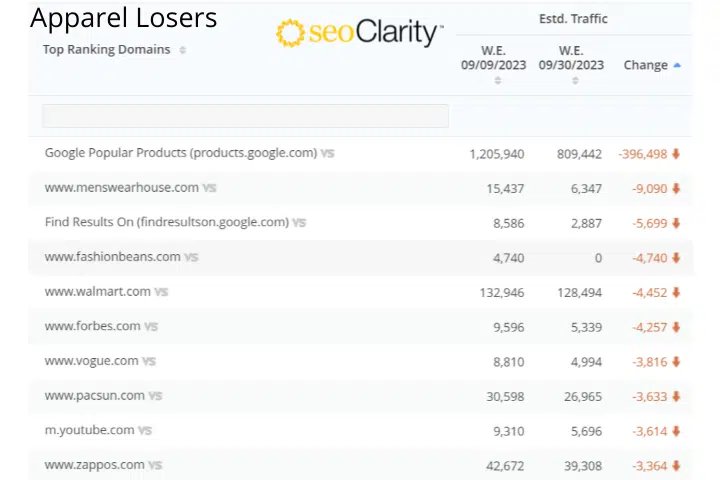
RankRanger. The folks at RankRanger showed a typical trend with its Rank Risk Index, showing calming after the update started to roll out:
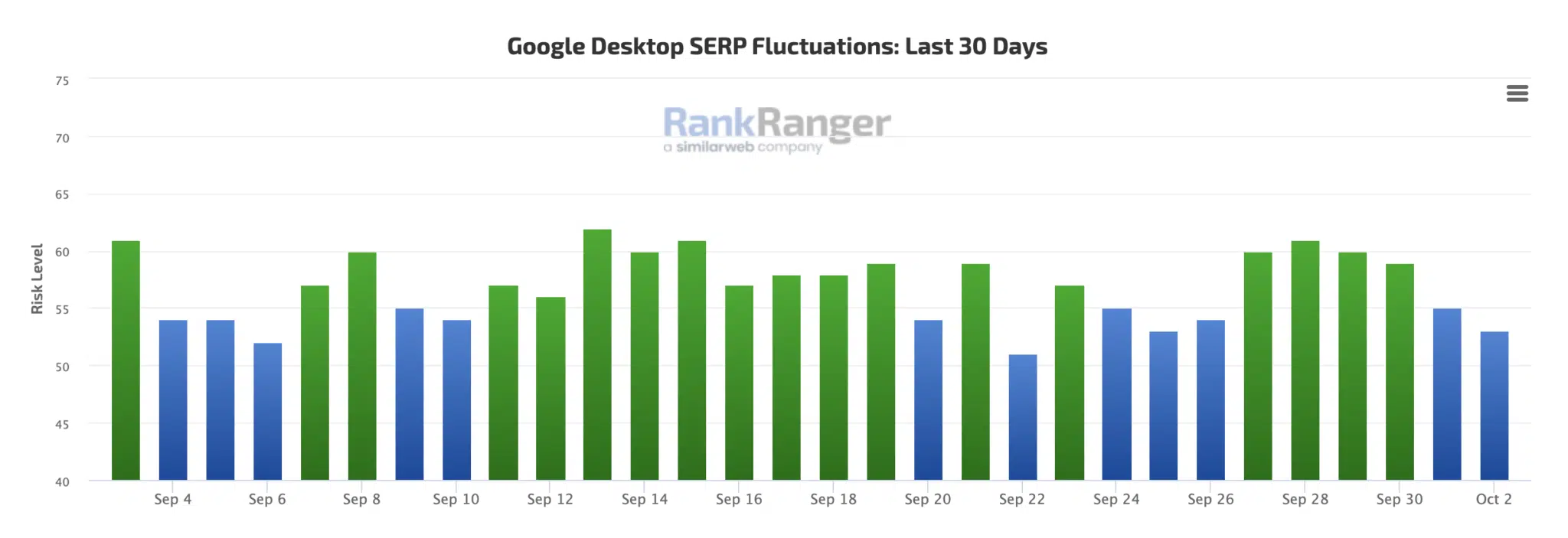
RankRanger’s team is a bit delayed in sending me their data but I will update this story once I receive it.
Other tools. While the other tools did not send me data, many have dashboards that show volatility changes to the search results. Here they are:
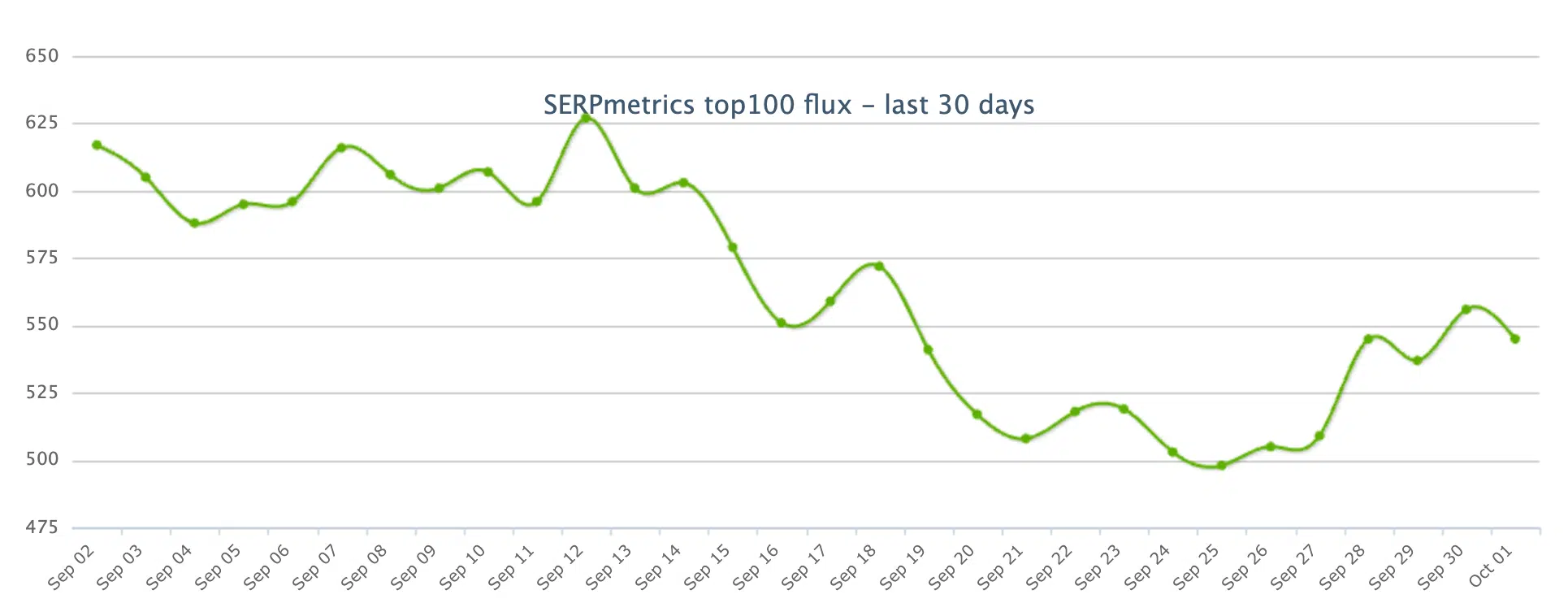

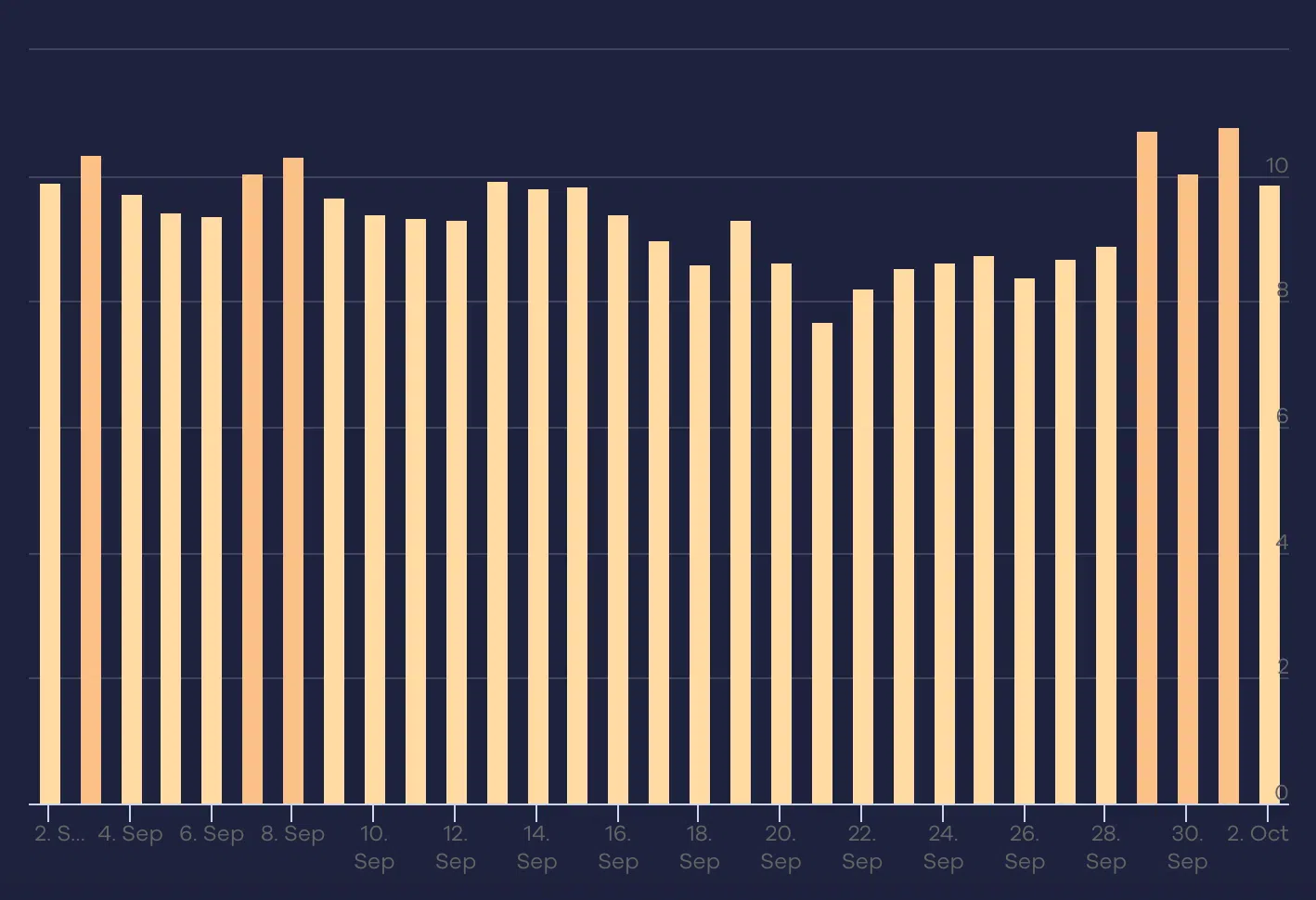
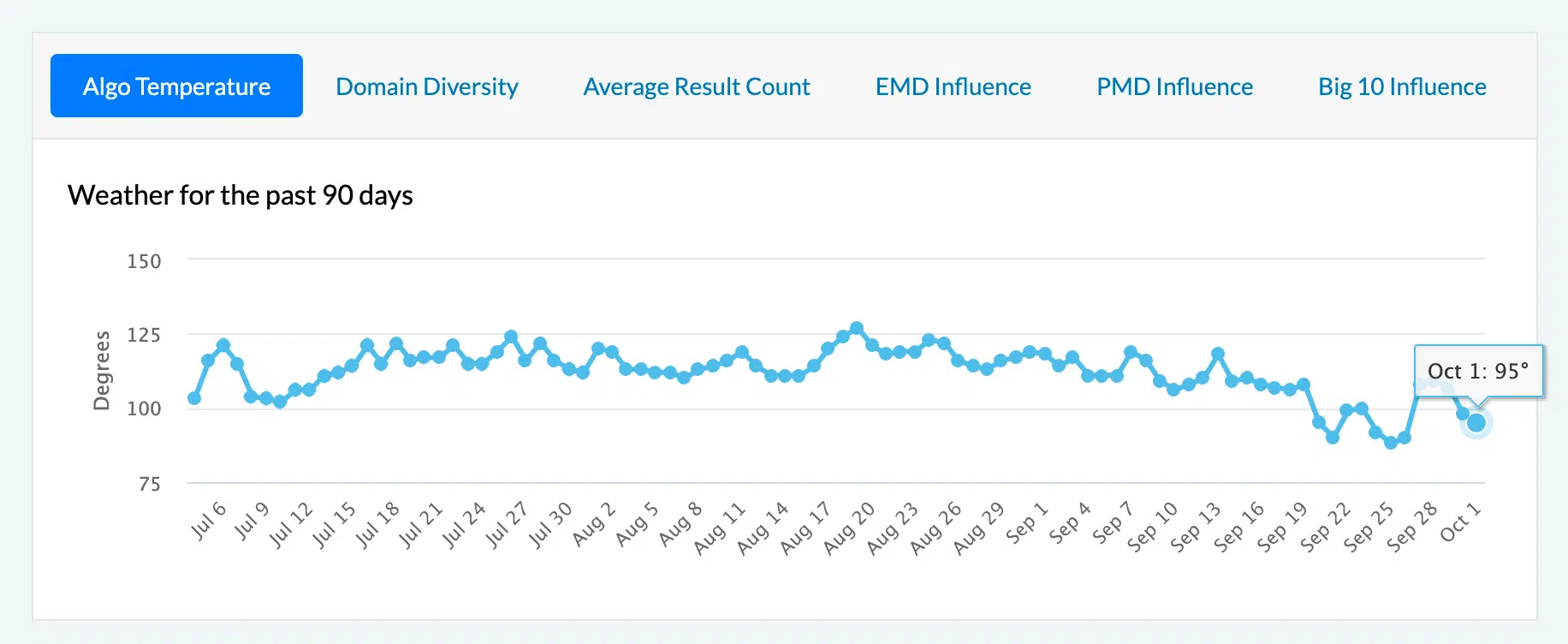
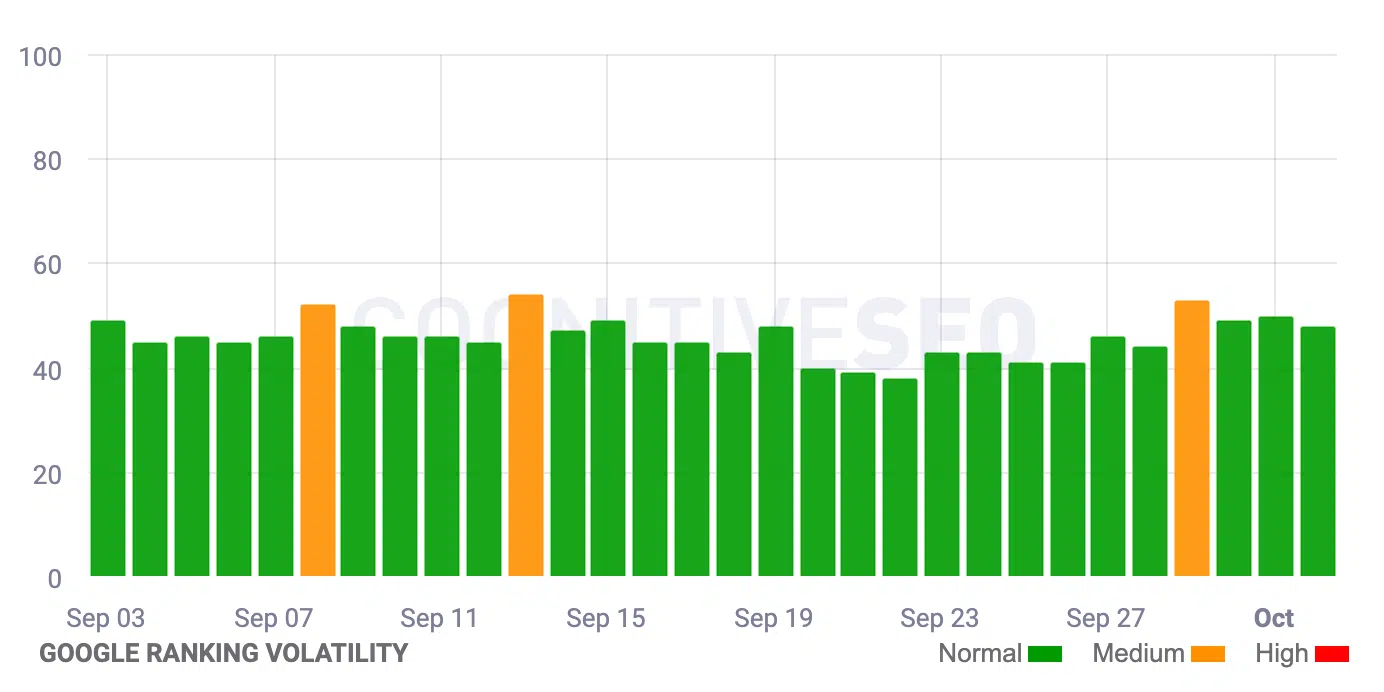




More insights and data
I asked Glenn Gabe, SEO Consultant at G-Squared Interactive, to provide some examples of sites that saw declines due to this last helpful content update. For privacy reasons, he did not share the specific names of the sites but he did share anonymized data of two sites that saw big declines in their Google search visibility due to this update.
Here are those charts:
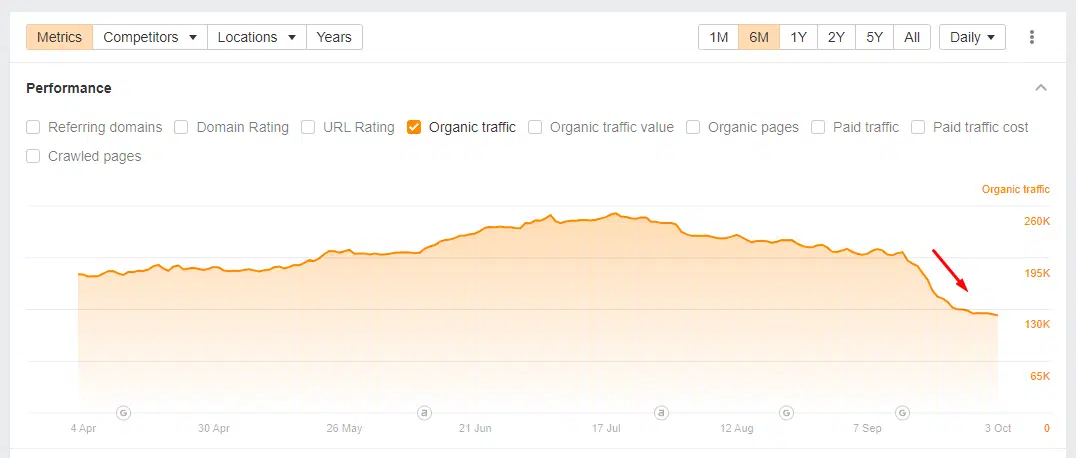
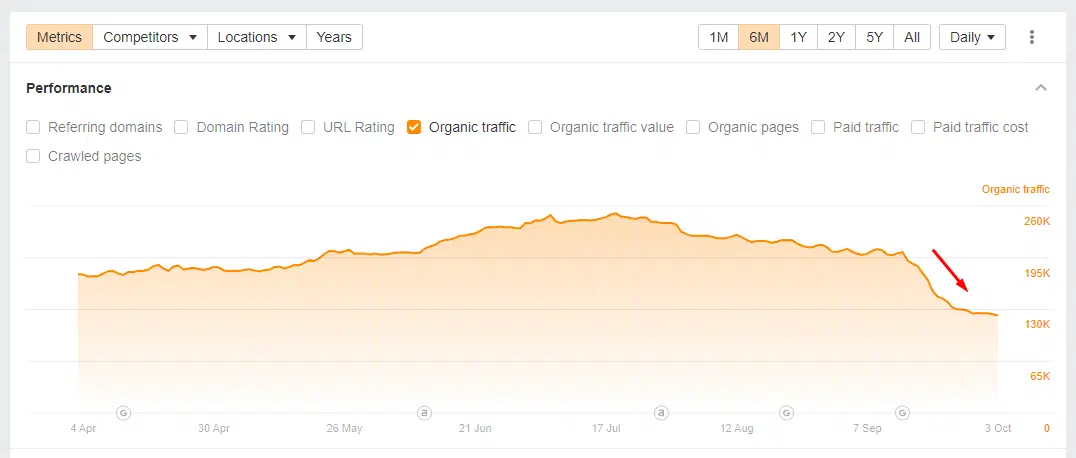
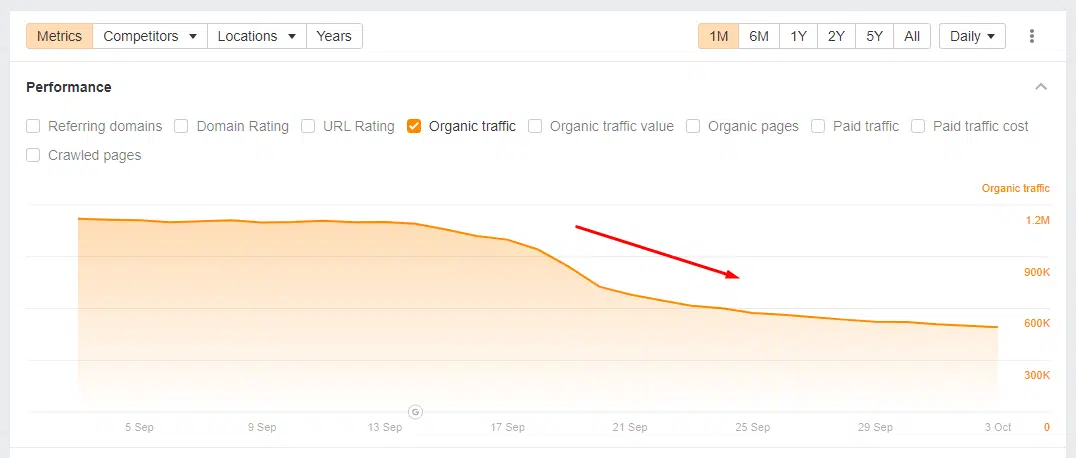
ANYONE ELSE?
My personal opinion. I believe this update targeted SEO-first, or search engine-first, content. I covered a lot of the industry “chatter,” the noise within the SEO industry, over the course of the update. My stories have hundreds of comments, including over 270 comments here, 170 comments here, 200 comments here, 235 comments here and 225 comments here and growing. The industry chatter on my site, in the forums and on social is really heated. In my opinion, it is more heated than even a core update.
It reminds me of when Google released the Penguin update that ravished the link-building SEO industry overnight. To be fair, it was not as devasting as that but it was pretty harsh. Maybe you can equate this more closely to the Panda update that target more content-related techniques. But this update seemed to go after content that was written for ranking in search.
It’s worth repeating, this is not to say that there was not collateral damage, and good, helpful sites, did see a drop in traffic related to the helpful content update.
And this makes sense, this update was originally aimed to target content written only to rank well in search engines. ogle’s helpful content system specifically targets “content that seems to have been primarily created for ranking well in search engines rather than to help or inform people,” as we covered earlier.
This algorithm update aims to help searchers find “high-quality content,” Google told us. Google wants to reward better and more useful content that was written for humans and to help users.
Searchers get frustrated when they land on unhelpful webpages that rank well in search because they were written for the purpose of ranking in search engines. This is the type of content you might call “search engine-first content” or “SEO content.”
Google’s helpful content algorithm aims to downgrade those types of websites while promoting more helpful websites, designed for humans, above search engines.
Google said this is an “ongoing effort to reduce low-quality content and make it easier to find content that feels authentic and useful in search.”
What to do if you are hit. Google has provided a list of questions you can ask yourself about your content. Read through those questions as we posted over here, and in an unbiased manner, ask yourself if your content is in sync with this update.
Please note if this update has hit you, it can take several months to recover if you do everything right and make changes to your content over time.
Dig in, see what content and website improvements you can make to your site and start now. This is a process that can take months and months and hopefully in the next several months you will see improvements.








